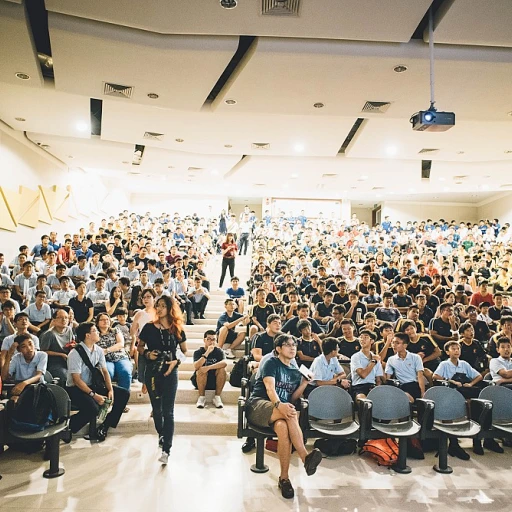
Understanding Work Pods
Modernizing Workspace with Innovative Office Pods
The concept of work pods is drastically reshaping how we perceive the traditional office environment. These compact, often soundproof units, referred to as office pods or meeting pods, provide a quiet retreat and an element of space division that is often missing in open-plan offices. As workspaces evolve, work pods are emerging as a cost-effective solution for individuals and companies seeking flexibility and focus in design. Whether it's a work pod nestled in the backyard, facilitating a quiet work-from-home space, or integrated into a bustling office as a dedicated meeting room, these innovative products serve a variety of purposes. They provide a refuge from the distractions of a noisy office space, enabling better concentration and productivity. Companies like Herman Miller and Framery are leading the way by offering furniture designs that cater to the specific needs of a modern workspace. The variety of work pods available today cater to different needs and budgets. From the basic unit priced for affordability to high-end, smart meeting pods equipped with state-of-the-art technology for seamless video calls, the options are vast. They often feature either fixed height or height-adjustable settings to promote ergonomic comfort. For those seeking flexibility, outdoor office pods introduce a novel approach to remote working, allowing people to set up their personal workspace in their backyard. These pods combine the benefits of an office environment with the tranquility of working amidst nature. The integration of intelligent design in these pods makes them a versatile solution for remote workers seeking the perfect balance between office-like focus and the comfort of working remotely. As workspaces continue to adapt, particularly in the context of the recent shift to remote working, exploring how HR needs to embrace online tools is crucial in facilitating this transition. This approach not only enhances productivity but also equips companies with the tools required to meet modern working demands.The Benefits of Work Pods
Advantages of Embracing Work Pods
The adoption of work pods has been gaining momentum across various sectors, driven by their potential to revolutionize the traditional workspace. Offering a unique blend of privacy and flexibility, work pods are crafted to enhance productivity while ensuring employee well-being. Here’s a closer look at why work pods are becoming an attractive option for businesses:- Enhanced Focus and Productivity: Work pods are designed as quiet spaces, mitigating the distractions often associated with open plan layouts. With optimal soundproof office solutions, these pods allow individuals to maintain laser-sharp focus, which is crucial for tasks requiring deep concentration.
- Space Efficiency: Given their compact design, work pods enable effective space division, making them a cost-effective alternative to traditional office layouts. By optimizing office space, companies can accommodate more employees without compromising comfort or productivity.
- Flexibility and Adaptability: Many work pods come with adjustable features such as fixed height or height adjustable desks, allowing users to modify their workspace to suit personal preferences. This adaptability is further enhanced by products like Herman Miller furniture, which are often incorporated within these units to improve ergonomic comfort.
- Technology Integration: Equipped with the latest smart technology, work pods allow seamless connectivity for video calls, online meetings, and other collaborative efforts. This integration is crucial for maintaining business operations in today's digital-first work environment, as detailed in the evolving role of statutory employees working from home.
- Versatility in Use: Beyond serving as individual workspaces, work pods can be transformed into meeting pods or conference spaces, offering versatility in usage. Outdoor offices and backyard office pods provide additional flexibility, catering to those who thrive when working in more natural settings.
Challenges and Considerations
Balancing the Act: Potential Pitfalls in Adopting Work Pods
As the work landscape continues to transform, alongside the advantages of work pods, come specific challenges and considerations that businesses must navigate. Investing in work pods might initially seem straightforward; however, a deeper dive reveals intricacies surrounding design, cost, and usability. First, let's address the cost implications. While work pods offer a focused working environment, it's paramount to evaluate the unit price thoroughly. Brands like Framery, known for their sophisticated office pod solutions, come with a price tag reflecting their product's quality and innovation. The key is to determine the balance between cost-effectiveness and the desired features, such as soundproof office capabilities, smart furniture options, and adaptable designs. Also, note the potential for streamlined costs in terms of real estate, as work pods can maximize office space efficiently. Adapting to work pods also demands thoughtful space planning. The integration of work pods into an open plan office necessitates strategic space division, ensuring that they complement the existing workspace configuration without causing disruption. How these pods are positioned can affect acoustics, privacy, and overall productivity. Whether it's the bay work format of height-adjustable meeting pods or fixed height quiet units in a backyard office, the setup must be conducive to both individual and collaborative work sessions. Furthermore, the selected design should cater to the end-users' needs. Considerations on how these pods will support video calls, provide meeting space, and maintain a quiet atmosphere for focus work are critical. The variation among industries also determines what type of work pod is suitable, whether it's an outdoor office design for creative companies or a more conventional interior office pod for corporate environments. Each industry presents unique demands that influence the design and specification choices. Lastly, the challenge lies in ensuring accessibility for all employees. While an outdoor office pod provides a unique working escape, factors like weather protection and ease of access become pivotal. Businesses need to balance innovative pod designs with pragmatic solutions that align with workforce needs. For a comprehensive understanding of how hybrid arrangements can be effectively supported in a pod-inclusive environment, you can explore these effective hybrid training programs.Work Pods in Different Industries
The Versatility of Work Pods Across Industries
Work pods are reshaping the workspace landscape, and this transformation is evident across various industries. Traditionally confined to office environments, their adaptability underscores a trend towards more flexible and personalized working spaces.
Corporate Offices
In corporate settings, office pods are becoming a staple. Their smart design fosters an excellent environment for focus-intensive tasks. By offering soundproof office pods and pods booths, companies can effectively address the challenges posed by open plan offices, particularly in managing noise and providing quiet rooms for video calls and meetings.
Healthcare
The healthcare sector is also tapping into the potential of work pods. Adapted as meeting pods or office pods, these can serve as quiet consultation rooms or private spaces for staff to unwind. Their cost effectiveness in design and price sale makes them an attractive product for healthcare facilities looking to optimize their space.
Education
Educational institutions are leveraging the flexibility of work pods as well. Office pods serve as versatile units for students and faculty alike, providing a conducive environment for individual study or group discussions. Their adaptability is further enhanced by options like height adjustable furniture, which caters to various user needs.
Remote and Outdoor Work
Work pods are not limited to indoor environments. With a growing preference for remote work, outdoor office and backyard office solutions are gaining traction. Framery’s pod designs, for example, are popular for creating outdoor workspaces that align with the demand for a more holistic and serene working environment.
As industries continue to evolve, work pods demonstrate their invaluable role in creating agile, efficient, and customized workspace solutions. Their integration into diverse working contexts reflects a paradigm shift towards more dynamic and user-centric office spaces.












